-
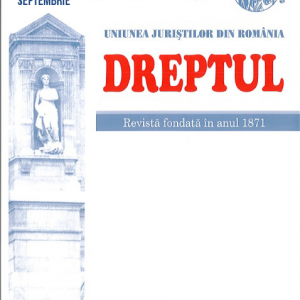 The amendment of the fundamental law of a State is an extremely complex political and legal act with major meanings and implications in the political and State social system, but also for each individual. This is the reason why such a process should be well justified, respond to well-traced political and legal social needs and particularly meet the principles and rules specific to a democratic constitutional and State system, by ensuring the stability and functionality that this system needs. This study reviews the need for such a constitutional reform in Romania, as well as certain provisions of the Presidential Commission’s Report analyzing the political and constitutional regime in our country. The study also words opinions about the justification of certain new constitutional regulations. Against this background, it is believed that there are arguments in favor of maintaining the bicameral parliamentary system, and a potential revision of the Fundamental Law should take into consideration the measures necessary to guarantee the political and constitutional institutions specific to the rule of law and to avoid the ultra vires exercise of the State authorities’ duties. According to the author of the study, the scope of the Constitutional Court’s duties should be extended.
The amendment of the fundamental law of a State is an extremely complex political and legal act with major meanings and implications in the political and State social system, but also for each individual. This is the reason why such a process should be well justified, respond to well-traced political and legal social needs and particularly meet the principles and rules specific to a democratic constitutional and State system, by ensuring the stability and functionality that this system needs. This study reviews the need for such a constitutional reform in Romania, as well as certain provisions of the Presidential Commission’s Report analyzing the political and constitutional regime in our country. The study also words opinions about the justification of certain new constitutional regulations. Against this background, it is believed that there are arguments in favor of maintaining the bicameral parliamentary system, and a potential revision of the Fundamental Law should take into consideration the measures necessary to guarantee the political and constitutional institutions specific to the rule of law and to avoid the ultra vires exercise of the State authorities’ duties. According to the author of the study, the scope of the Constitutional Court’s duties should be extended. -
 The current Civil Code advances a detailed regulation of the reparation of damage in case of tort liability, the most important matter of this institution. Being of deep impact in practice, the need for clarity of the new legal provisions is greater than in any other area of regulation. The study proposes their text analysis, emphasizing some shortcomings of the legal terminology used, of the systematization of the matter, but there are reported, in particular, some questionable solutions contrary to the European trends in matters of tort liability.
The current Civil Code advances a detailed regulation of the reparation of damage in case of tort liability, the most important matter of this institution. Being of deep impact in practice, the need for clarity of the new legal provisions is greater than in any other area of regulation. The study proposes their text analysis, emphasizing some shortcomings of the legal terminology used, of the systematization of the matter, but there are reported, in particular, some questionable solutions contrary to the European trends in matters of tort liability. -
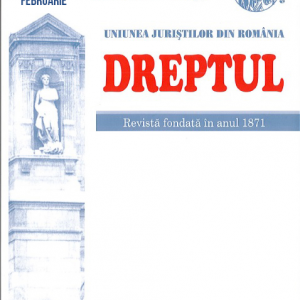 The current modality of regulating the institution of suspension can raise two categories of problems: on the one hand, problems of systematization of the matter, problems of qualification of the various cases of suspension as being of law, on the initiative of the employee, on the initiative of the employer or by the parties’ agreement, problems of drafting of suspension assumptions and problems of drafting of the regulation. On the other hand, the current regulation also creates difficulties of substance, which can lead to confusions and inconsistencies. Based on the consideration of the legislator’s option to group the different causes for suspension within the same chapter – otherwise a meritorious option –, this paper intends, however, to draft de lege ferenda proposals for the improvement of the regulation, both on the substance and in terms of form of the regulation.
The current modality of regulating the institution of suspension can raise two categories of problems: on the one hand, problems of systematization of the matter, problems of qualification of the various cases of suspension as being of law, on the initiative of the employee, on the initiative of the employer or by the parties’ agreement, problems of drafting of suspension assumptions and problems of drafting of the regulation. On the other hand, the current regulation also creates difficulties of substance, which can lead to confusions and inconsistencies. Based on the consideration of the legislator’s option to group the different causes for suspension within the same chapter – otherwise a meritorious option –, this paper intends, however, to draft de lege ferenda proposals for the improvement of the regulation, both on the substance and in terms of form of the regulation. -
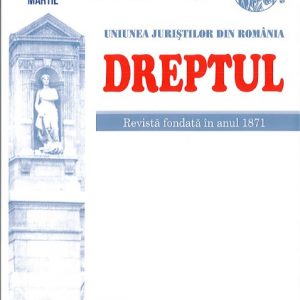 This approach is meant to carry out a brief examination of the control which the judge is required to perform on the acts of disposition of the parties in the civil trial. It refers to the main sides of availability and, especially, to the presentness and imperativeness of such a control. In this context, the author notes that the new Civil Procedure Code has not abdicated from the active role of the judge, this being far from the peak of its „glory”. Likewise, the author analyzes the procedural ways of invalidation of the acts of disposition, first noting the incidental legislative regulation both with regard to the transaction and to the judgment that confirms the agreement of the party. It is noted that, from a normative point of view, the party does not have an option right between the exercise of the action for annulment and the means of recourse against the judicial transaction. At the end of the study, the author analyzes some aspects of the recourse which can be exercised against the acts of divestment and acquiescence to the claims of the applicant.
This approach is meant to carry out a brief examination of the control which the judge is required to perform on the acts of disposition of the parties in the civil trial. It refers to the main sides of availability and, especially, to the presentness and imperativeness of such a control. In this context, the author notes that the new Civil Procedure Code has not abdicated from the active role of the judge, this being far from the peak of its „glory”. Likewise, the author analyzes the procedural ways of invalidation of the acts of disposition, first noting the incidental legislative regulation both with regard to the transaction and to the judgment that confirms the agreement of the party. It is noted that, from a normative point of view, the party does not have an option right between the exercise of the action for annulment and the means of recourse against the judicial transaction. At the end of the study, the author analyzes some aspects of the recourse which can be exercised against the acts of divestment and acquiescence to the claims of the applicant. -
 Paragraph (1) of Article 2506 of the Civil Code provides that “limitation does not operate automatically”. The author considers this wording not only useless but also contrary to the reality. He supports his view by emphasizing that the doctrinal thesis underlying its preparation is inaccurate and also that paragraph (1) of Article 2506 of the Civil Code contravenes certain preceding or subsequent legal provisions. In conclusion, the author believes that limitation effect occurs automatically and removing civil liability, which is a consequence of this effect, operates only at the request of those entitled to invoke limitation.
Paragraph (1) of Article 2506 of the Civil Code provides that “limitation does not operate automatically”. The author considers this wording not only useless but also contrary to the reality. He supports his view by emphasizing that the doctrinal thesis underlying its preparation is inaccurate and also that paragraph (1) of Article 2506 of the Civil Code contravenes certain preceding or subsequent legal provisions. In conclusion, the author believes that limitation effect occurs automatically and removing civil liability, which is a consequence of this effect, operates only at the request of those entitled to invoke limitation. -
 The article approaches the issue of the criminal prosecution bodies’ decision on the documents or procedural measures taken while conducting the criminal prosecution. The author examines which of the criminal prosecution bodies – the prosecutor or the criminal investigation body – is entitled to rule on the acts or procedural measures and by which of the procedural acts is ruling; the author also expresses his opinion on the penalty for failure to comply with article 286 of the new Code of Criminal Procedure.
The article approaches the issue of the criminal prosecution bodies’ decision on the documents or procedural measures taken while conducting the criminal prosecution. The author examines which of the criminal prosecution bodies – the prosecutor or the criminal investigation body – is entitled to rule on the acts or procedural measures and by which of the procedural acts is ruling; the author also expresses his opinion on the penalty for failure to comply with article 286 of the new Code of Criminal Procedure. -
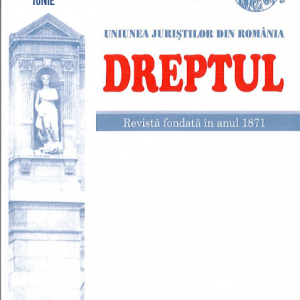 The article presents some considerations on the special procedural provisions regarding computer search set forth by Law no. 161/2003 on ensuring transparency in carrying out public dignities, public functions and in the business environment, the prevention and sanctioning of corruption. The author examines the nature of the legal institution of computer search and expresses his opinion regarding the need for a distinct regulation of computer search, in relation to the provisions of the Code of Criminal Procedure in the matter of checking and seizing objects and documents, search and technical-scientific finding.
The article presents some considerations on the special procedural provisions regarding computer search set forth by Law no. 161/2003 on ensuring transparency in carrying out public dignities, public functions and in the business environment, the prevention and sanctioning of corruption. The author examines the nature of the legal institution of computer search and expresses his opinion regarding the need for a distinct regulation of computer search, in relation to the provisions of the Code of Criminal Procedure in the matter of checking and seizing objects and documents, search and technical-scientific finding. -
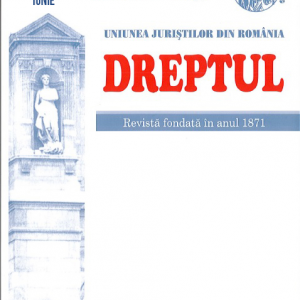 The article presents some considerations on the special procedural provisions regarding computer search set forth by Law no. 161/2003 on ensuring transparency in carrying out public dignities, public functions and in the business environment, the prevention and sanctioning of corruption. The author examines the nature of the legal institution of computer search and expresses his opinion regarding the need for a distinct regulation of computer search, in relation to the provisions of the Code of Criminal Procedure in the matter of checking and seizing objects and documents, search and technical-scientific finding.
The article presents some considerations on the special procedural provisions regarding computer search set forth by Law no. 161/2003 on ensuring transparency in carrying out public dignities, public functions and in the business environment, the prevention and sanctioning of corruption. The author examines the nature of the legal institution of computer search and expresses his opinion regarding the need for a distinct regulation of computer search, in relation to the provisions of the Code of Criminal Procedure in the matter of checking and seizing objects and documents, search and technical-scientific finding. -
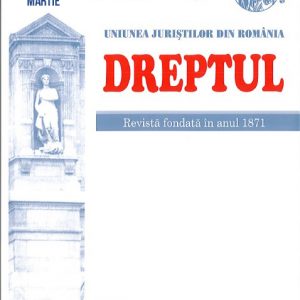 In the present study, the author gives us a general examination concerning the right to a fair trial and of the settlement of the case within an optimal and predictable time limit. The approach is carried out in accordance with the international and internal regulations, but also in consideration of the latest doctrinal and jurisprudential evolutions in the matter. The first part of the study is devoted to the fair trial, and the main ideas promoted in the context are related to the complex character of the subjective right proclaimed by Article 6 (1) of the European Convention on Human Rights. In the second part of the present approach there are presented the procedural meanings of the right to the settlement of the case in an optimal and predictable time limit. Likewise, some considerations have also been formulated on the legal contest concerning the delaying of the trial, a remedy deemed useful by the author, although the results involved by this institution can not be regarded as spectacular. The author also evokes the recent amendments to the new Civil Procedure Code, such as those concerning the suppression of the review filtering procedure and the possibility of extending the term for the motivation of the judgment no more than twice.
In the present study, the author gives us a general examination concerning the right to a fair trial and of the settlement of the case within an optimal and predictable time limit. The approach is carried out in accordance with the international and internal regulations, but also in consideration of the latest doctrinal and jurisprudential evolutions in the matter. The first part of the study is devoted to the fair trial, and the main ideas promoted in the context are related to the complex character of the subjective right proclaimed by Article 6 (1) of the European Convention on Human Rights. In the second part of the present approach there are presented the procedural meanings of the right to the settlement of the case in an optimal and predictable time limit. Likewise, some considerations have also been formulated on the legal contest concerning the delaying of the trial, a remedy deemed useful by the author, although the results involved by this institution can not be regarded as spectacular. The author also evokes the recent amendments to the new Civil Procedure Code, such as those concerning the suppression of the review filtering procedure and the possibility of extending the term for the motivation of the judgment no more than twice. -
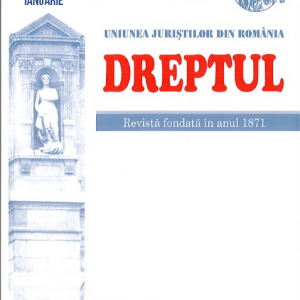 This study is designed to carry out a general examination of the provisions established in Law no. 202/2010 regarding certain measures to accelerate the resolution of trials. The author presents the most significant amendments and supplements brought to the current civil procedure code in various fields: the judgment before the trial court, the appeal, the second appeal, the special procedure and the enforcement. The author also formulates opinions regarding some of the new legislative interventions. However, some “innovative” solutions are also emphasized in relation to the provisions of the new Civil Procedure Code itself, some of them being considered by the author questionable.
This study is designed to carry out a general examination of the provisions established in Law no. 202/2010 regarding certain measures to accelerate the resolution of trials. The author presents the most significant amendments and supplements brought to the current civil procedure code in various fields: the judgment before the trial court, the appeal, the second appeal, the special procedure and the enforcement. The author also formulates opinions regarding some of the new legislative interventions. However, some “innovative” solutions are also emphasized in relation to the provisions of the new Civil Procedure Code itself, some of them being considered by the author questionable. -
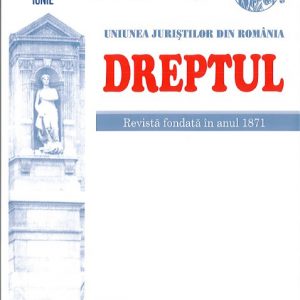 The matter of personal data was subjected to review, in order to adapt the dynamics of the new technologies to the imperatives for protecting personal life. Regulation (EU) 2016/679 and Directive (EU) 2016/680 have as their object the personal data processing operations and reflect the process of adaptation to the new national and cross-border realities, and also reflect the harmonization of the numerous proposals formulated, particularly by companies and by the representatives of the civil society. The analysis concerns the new Regulation (EU) 2016/679 and is divided as follows: the first part delineates the relevant provisions of the personal data, identifies the right to privacy and the right to the protection of personal data, as fundamental rights of individuals, outlines the scope of the Regulation, details the terminology aspects and exposes the personal data processing principles; the second part addresses the rights of the persons concerned and the obligations of professionals in handling the personal data, the international data transfer, control authorities and procedures envisaged in the interstate cooperation.
The matter of personal data was subjected to review, in order to adapt the dynamics of the new technologies to the imperatives for protecting personal life. Regulation (EU) 2016/679 and Directive (EU) 2016/680 have as their object the personal data processing operations and reflect the process of adaptation to the new national and cross-border realities, and also reflect the harmonization of the numerous proposals formulated, particularly by companies and by the representatives of the civil society. The analysis concerns the new Regulation (EU) 2016/679 and is divided as follows: the first part delineates the relevant provisions of the personal data, identifies the right to privacy and the right to the protection of personal data, as fundamental rights of individuals, outlines the scope of the Regulation, details the terminology aspects and exposes the personal data processing principles; the second part addresses the rights of the persons concerned and the obligations of professionals in handling the personal data, the international data transfer, control authorities and procedures envisaged in the interstate cooperation. -
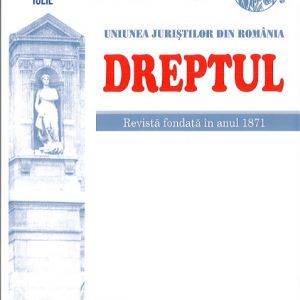 The Regulation (EU) 2016/679 provides a special protection regime for the sensitive data, given the nature of the information and the high risk of processing it in relation to the rights and freedoms of individuals. The regulation of the rights of the persons concerned is considerably improved, and the set of obligations incumbent for those responsible is strengthened. The international transfer of personal data knows several methods, depending on the existence of the decision concerning the adequate protection level or the presence of the appropriate guarantees. Among the novelty elements we can find the creation (at national level) of a unique contact point and the establishment of the European Committee for data protection (body of the Union, with legal personality).
The Regulation (EU) 2016/679 provides a special protection regime for the sensitive data, given the nature of the information and the high risk of processing it in relation to the rights and freedoms of individuals. The regulation of the rights of the persons concerned is considerably improved, and the set of obligations incumbent for those responsible is strengthened. The international transfer of personal data knows several methods, depending on the existence of the decision concerning the adequate protection level or the presence of the appropriate guarantees. Among the novelty elements we can find the creation (at national level) of a unique contact point and the establishment of the European Committee for data protection (body of the Union, with legal personality).
